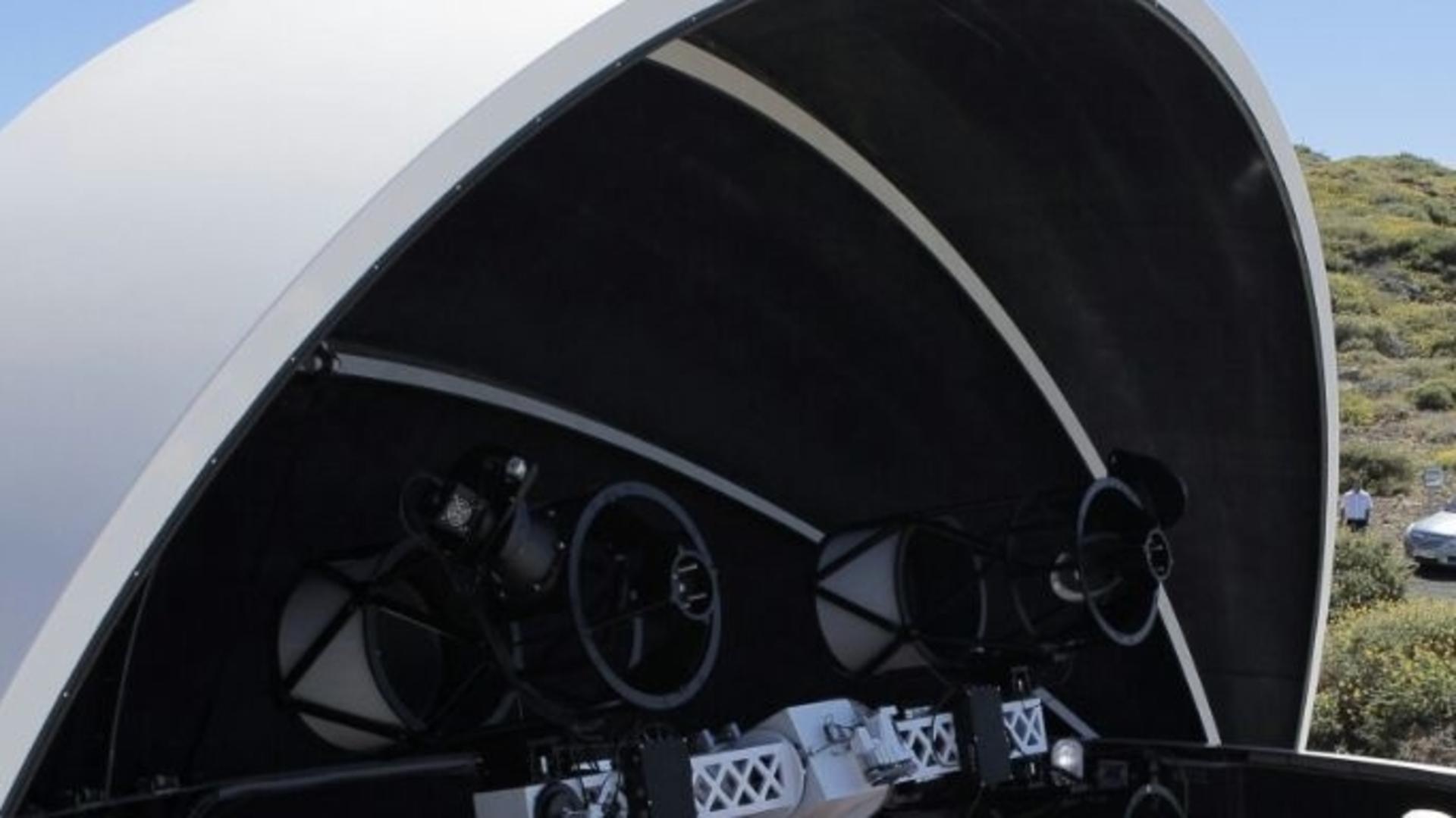Gravitational wave Optical Transient Observatory


The initial instrument, now installed at the Roque de los Muchachos Observatory, has four astrographs (with a total capacity for 8) of 40 cm diameter, with high sensitivity CCD cameras. These instruments allow the coverage of a field of some 5 square degrees each, and can detect objects down to 21st magnitude.
The Gravitational-wave Optical Transient Observer (GOTO) was inaugurated at Warwick’s astronomical observing facility in the Roque de los Muchachos Observatory of the Instituto de Astrofísica de Canarias on La Palma, Canary Islands, on 3 July 2017.
GOTO is an autonomous, intelligent telescope, which will search for unusual activity in the sky, following alerts from gravitational wave detectors - such as the Advanced Laser Interferometer Gravitational-Wave Observatory (aLIGO), which recently secured the first direct detections of gravitational waves.
Gravitational waves are ripples in the fabric of space-time, created when massive bodies – particularly black holes and neutron stars – orbit each other and merge at very high speeds.
These waves radiate through the Universe at the speed of light, and analysing them heralds a new era in astrophysics, giving astronomers vital clues about the bodies from which they originated – as well as long-awaited insight into the nature of gravity itself.
First predicted over a century ago by Albert Einstein, they have only been directly detected in the last two years, and astronomers’ next challenge is to associate the signals from these waves with signatures in the electromagnetic spectrum, such as optical light.
This is GOTO’s precise aim: to locate optical signatures associated with the gravitational waves as quickly as possible, so that astronomers can study these sources with a variety of telescopes and satellites before they fade away.
GOTO is a significant project for the Monash-Warwick Alliance, through which the construction of the telescope was partially funded. The Alliance combines the exceptional research and teaching capabilities of two world-class universities to meet the challenges of the 21st century.